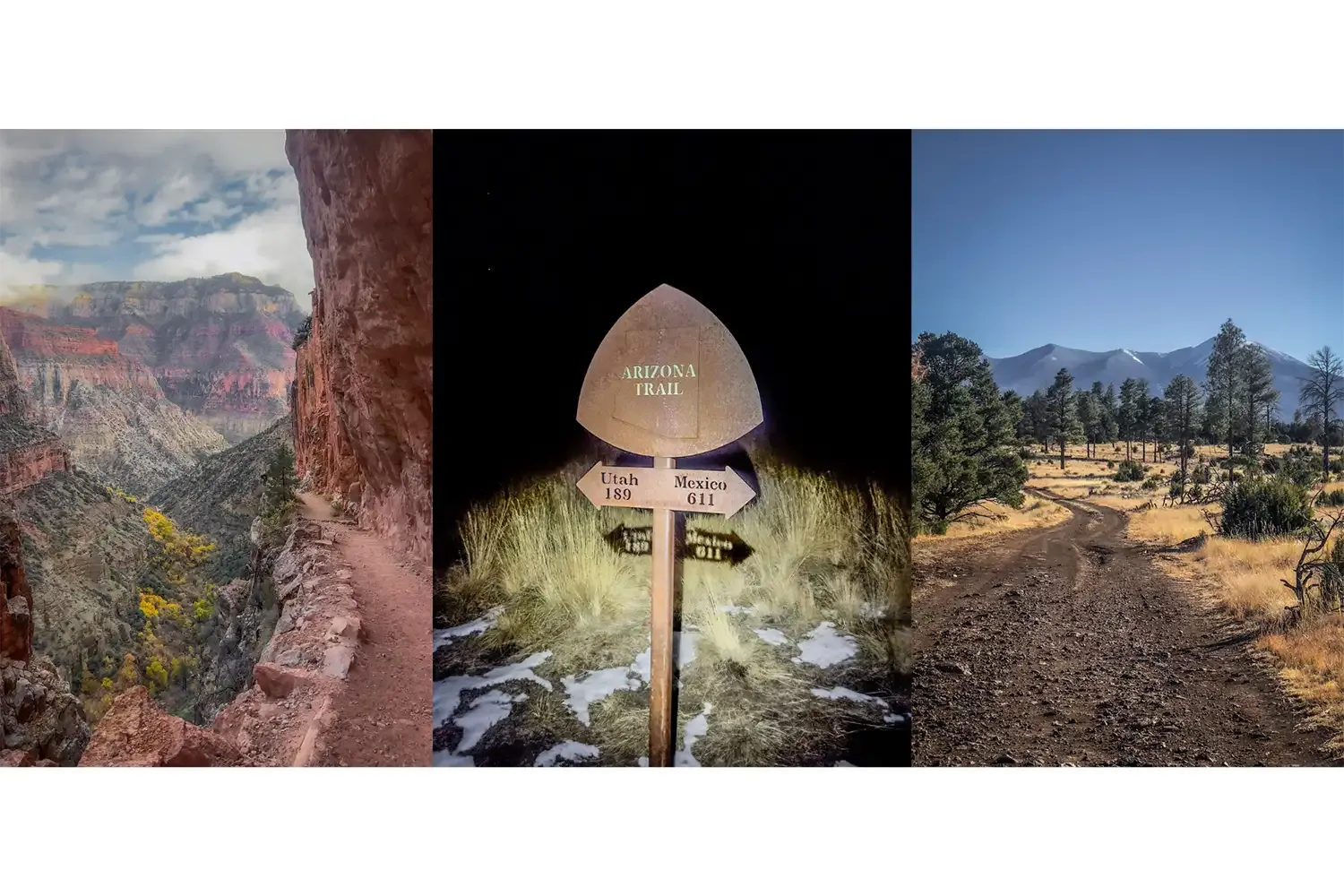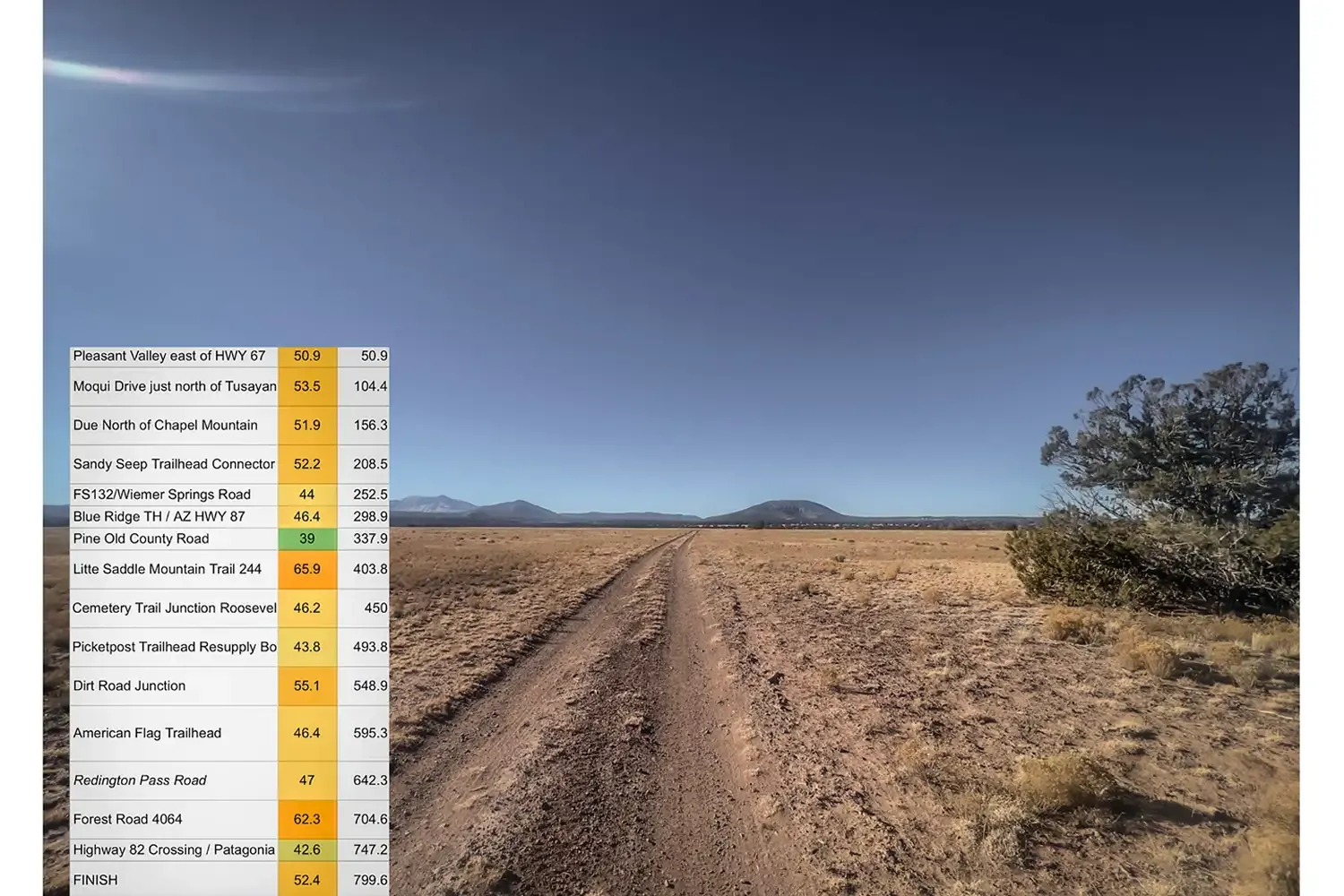The Arizona Trail: Lessons learned

By: LOWA Pro Team Athlete Sunny Stroeer
A week before Thanksgiving I set out to run the length of the Arizona Trail, all 800 miles of it. I wanted to do it in record time, too, which meant that I needed to beat the standing women’s record of 17 days and 11 hours.
I am no stranger to endurance missions. The harder and more remote the route, the more I tend to thrive on it (case in point: my Aconcagua, Annapurna Circuit, Pfiffner Traverse and R2R2R-alt speed records). The Arizona Trail was giving me pause, and not because of the difficulty of the trail; in fact I expected it to be flatter and faster than most other routes that I have attempted. What was giving me pause about the Arizona Trail was its sheer length - 800 miles is a word! - and the fact that I would be launching into this adventure without much if any specific training: between my responsibilities as the owner-manager of two small businesses and a non-profit, and my usual exuberant optimism, most of my recent miles were slow and casual desert backcountry miles in my capacity as a guide; a far cry from the big training weeks of mountain miles that should precede an attempt like this.

That said.. I have tackled various adventures with inadequate preparation and, to-date, have not had to pay the price for it: my first-ever ultra marathon, a 100 kilometer race in Madagascar, with just three weeks notice and no proper running shoes (thankfully the latter is no longer an issue, now that I am an athlete for LOWA Boots!); the iconic Western States 100 Mile Endurance Race on less than 20 weekly miles of training; the remote Tuckup Trail, off the couch; the Iditarod Trail Invitational 350 on cross-country skis with no prior skiing or winter ultra experience. All of these adventures made me work for them, yet I was able to complete them and without severe injury. Combine the learnings that I have taken away from these prior experiences and you may understand why I decided to yield to the siren song of the Arizona Trail despite my utter lack of preparation.
I won’t bore you with the day-to-day account of what happened out there on the trail (you can find those on my personal blog here). To cut to the chase: things did not work out this time. Not only did I not set a new speed record; I didn’t even make it halfway through my intended distance, and when I dropped out at just over 300 miles after seven days on the trail I was in so much pain that I could barely walk. As I am writing this I am still waiting for a definitive diagnosis of my injury. All signs are pointing towards a stress fracture in my left tibia - a textbook overuse injury from textbook overuse circumstances.
Do I regret embarking on this adventure? I do not. I knew it was an audacious if not arrogant plan. I knew that I was risking overuse injuries (though, having been very lucky until now, I admittedly did not expect a stress fracture). I was monitoring myself closely and anticipated many an issue related to my usual overuse trouble spots: Morton’s neuroma, IT bands, knees, ankles, blisters. And while this show-stopping presumed stress fracture crept up on me rapidly and unexpectedly, I am utterly content with my days on the trail leading up to the point where I quit, as well as with my decision to quit when I did; I left no iota of doubt on the trail.

My training for this record attempt may not have been smart, but I do feel that my execution on the trail was strategic and well-metered, all things considered. Here’s why:
- I rested early and often; I slept when I needed to
- I fueled consistently and proactively
- I asked for helped when I needed it
- I did not let weather or late nights get to my head
And here’s what I learned in the process:
1. The obvious lesson. Don’t go from 15 miles a week straight to 300 miles a week. Nobody is immune to overuse injuries, and even though I’ve been able to get away with murder in the past - like ramping up from minimal miles straight to 245 weekly miles during the Iditarod Trail Invitational - I still have physical limits. This attempt on the Arizona Trail showed me mine.
2. The mundane lesson. Sweat the little stuff. I have always known to identify and fix issues early (say blisters, temperature management, or nutrition), but I didn’t pay good enough attention to my hygiene. Peeing on the trail without TP or pee rag meant that I started to chafe a bit after Day 2. By Day 5, the nuisance of some mild chafing had turned into a show stopper as my nether regions became so raw that I seriously struggled to make progress. I sheepishly had to call my crew and ask them for help with, you guessed it, thoroughly taping my behind.
Note: Thank you, Mel, for your personal sacrifice as you taped me up, and for sacrificing your Kula Cloth for my latter days on the trail — it is my stated goal to never have to ask my crew for that sort of assistance again, in any future endurance endeavor. This also means that I will never again head out on a long adventure without carrying a Kula Cloth with me. Hold me to it!

3. The desert conditions lesson. Out of all the things that pose challenges for an endeavor like this, I primarily struggled with: the stress fracture; the aforementioned chafing; and my lungs, which are known to give me trouble after sustained exercise particular in cold conditions - think Alaska, or the high mountains. Living in the desert I know how cold it gets here in the winter, yet I treated my airway management much more casually than I would for a high altitude speed record or winter ultra. The result was that I was regularly hacking up a lung by the time I pulled the plug at 309 miles. While the coughing itself wasn’t utterly problematic (yet), it did impact my sleep quality and made rest that much more tenuous. I will be a lot more careful on my next attempt.
4. The footwear lesson. I have been training and adventuring in LOWA footwear for years - most recently in the LOWA ATR Fortux which I love. Due to my history with Morton’s neuroma, a painful nerve overuse injury that is best addressed by staying off your feet (ha!) and wearing shoes with ultra-wide toe boxes, I did also bring a pair of off-brand trail shoes to use for decompression should I have a bad spell of neuroma. After encountering neuroma issues in the Grand Canyon between mile 77 and 98 I pulled out my non-LOWA footwear and, against my own better judgment, used them for all 52 miles that next day before switching back into LOWA for Day 4 onward. While I didn’t have neuroma issues again after the Grand Canyon, this “alternative footwear day” was the day that my shin issue began to rear their ugly head. In retrospect, I might have seen it coming: the LOWA Fortux that I log 95% of all my miles in have a (for me) comfortable and familiar 6mm heel drop, whereas my “decompression” shoe was a zero drop model. Add cumulative fatigue and huge daily mileage, and this abrupt change in biomechanics makes for a terrific recipe for overuse injuries. For future attempts I will be sticking to my tried and true LOWAs.

5. The social lesson. Most of my past records have been unsupported or self-supported. While I have experienced what it’s like to run with crew support a few times before, it was always in the context of a race (Ouray 100, WSER 100), movie (TransQilian), or group effort (Nolan’s 14). The Arizona Trail was my first encounter with the fully supported style where my friends and partner showed up specifically and exclusively for me. The physical support of course was incredibly important, but the mental boost my crew gave me was even more essential - and that in an of itself is a huge reason for why I can’t wait to get out there and try it all over again.
All in all, this was an excellent adventure. I’ve said it before, and I’ll say it again: in the end, it’s not about the record - what matters is everything BUT the record. And while I certainly would have loved to walk away from my time on the Arizona Trail with one record more and one stress fracture less, I am beyond grateful for the time that I got to spend out there… and for the fact that I still have a big unknown and exciting effort to work towards: my return to this trail next season.

Photo credit: Sunny Stroeer